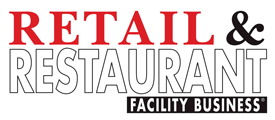— By Del Williams — Advanced Emergency Responder Communication Enhancement Systems (ERCES) eliminate potential dead zones in commercial buildings to help first responders stay connected. First responders such as fire, EMS and police depend on reliable two-way radio communication when lives and property are at risk. That’s not always an easy task in many buildings. In-building radio signals are often absorbed or blocked by structures that are larger, underground or constructed of concrete or metal. Additionally, building features designed to create more sustainable facilities such as low-E glass windows can …
Industry Voices
— By John Wright — Savvy retailers are finding innovative ways to boost efficiency. Modern building management systems can control everything from locked doors and temperature settings, to lighting and even audio and ambiance in today’s retail environments. But can they do more? Some retail leaders think so and are employing new strategies to gain a competitive advantage. “Dark deliveries” have emerged as one such strategy for optimizing efficiency and streamlining operations. This refers to an approach that allows retail stores to receive shipments during off-hours when operations are minimal …
— By David Shove-Brown, Robert Ervin & Katy Curtis — Expert strategies for aesthetic, functional and sustainable spaces. In recent years, there has been a noticeable shift in dining preferences, with more people gravitating toward outdoor environments rather than traditional indoor atmospheres, largely influenced by the pandemic even years later. This is evident across various settings, from bustling sidewalk cafes to outdoor-themed restaurants and even rooftop gardens and bars. Designing outdoor dining spaces has evolved into an art form that balances aesthetics, functionality and a strong connection with one’s surroundings. …
— By Amanda Anderson — Why you should proactively implement a pest prevention program. I don’t mean to be a pest, but do your facilities have a pest prevention program in place? Research has shown that preventative measures are crucial to keeping a safe and clean environment for both customers and employees, while cutting down on costs associated with pest treatments. Maintaining vigilant pest control programs remains crucial to keeping these unwelcome guests from creeping through the cracks and into your facility. Spotting a cockroach in the restroom should serve …
— By Tim Conn — 8 tips to appeal to Gen Z and future franchisees. Franchising has long been a successful business model, offering entrepreneurs the opportunity to own a business with an established brand and built-in support system. As the economic landscape evolves, the demographic that franchise owners must appeal to is also shifting. Generation Z, those born between 1997 and 2012, is emerging as a powerful consumer group and a growing pool of future franchisees. It’s imperative that current franchise owners understand and adapt to the values, preferences …
— By Greg Pittman — How exterior painting enhances curb appeal and draws in customers. The visual appeal of the outside of a business can play an integral role in attracting customers and ensuring its success. One of the most effective ways to enhance curb appeal that business owners tend to look is through exterior painting. Regardless of the type of business you’re running — whether a restaurant, retail store, medical facility, educational institute, fitness center or hotel — the building’s exterior is the first impression for the passersby. It …
— By Sharon Cho and Justin Shreiner — Selecting optimal water heating systems to meet the needs of full-service restaurants. Full-service restaurants are harsh environments for commercial water heaters. They operate for long hours, often from early morning to midnight, with continuous 140° hot water necessary for food prep, cooking and cleaning. This constant demand places a significant strain on water heating equipment and requires units that can withstand heavy use and provide consistent performance. For this reason, selecting the proper water heater is necessary to keep restaurants operational, remain …
Exhaustive Analysis
— By Christopher Collins, AIA, NCARB — The good, the bad & the ventless …exhaust hoods. The look of dismay on the chef’s face told me everything I needed to know: the vent hood was not cutting it and big money was going to be burned trying to remedy his woes. The issue was the ventless hood that was used for the cooking appliances. And not really the exhaust type that was being employed, but more of the expectations around that piece of equipment. That’s when I realized what ventless …
— By Sean Gillespie — Promoting lasting relationships through a consultative approach. For nearly three decades, our commercial painting firm has carved a path as a leader in the multi-site repaint program sector. Over the years, we have amassed a wealth of knowledge from both triumphs and challenges alike. Our extensive experience spans various industries, ranging from small local stores and restaurants to large national chains. Our commitment to going beyond the basics of painting extends to cultivating lasting client partnerships. These relationships transcend contractual obligations and foster mutual understanding …
— By Robert Harling — Innovative loss prevention technologies and strategies. The safety and security of shoppers and employees are at the top of the list of priorities for retail executives. Open and inviting stores where customers can shop without concern and employees are assured of their safety is not a new goal for retailers. As incidents of retail theft and in-store violence rise, retailers must adapt with effective strategies and advanced technologies to ensure a safe shopping environment. The National Retail Federation reported a 19.3% increase in retail shrink, …










